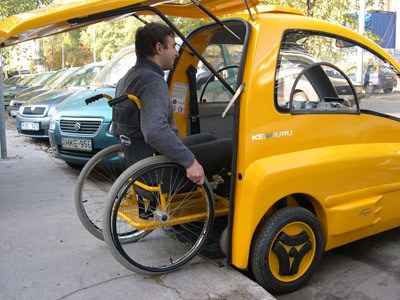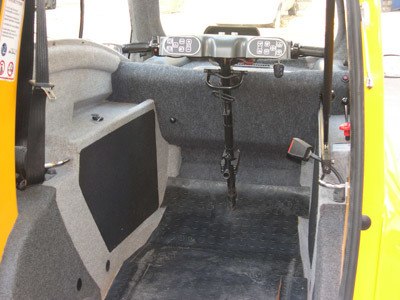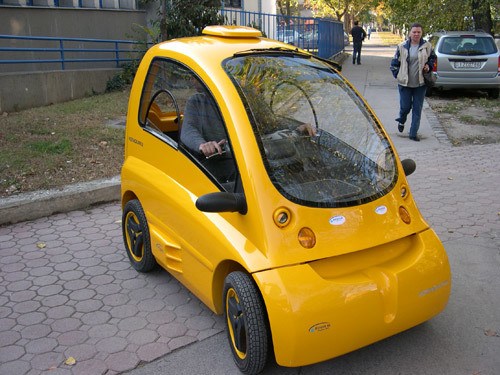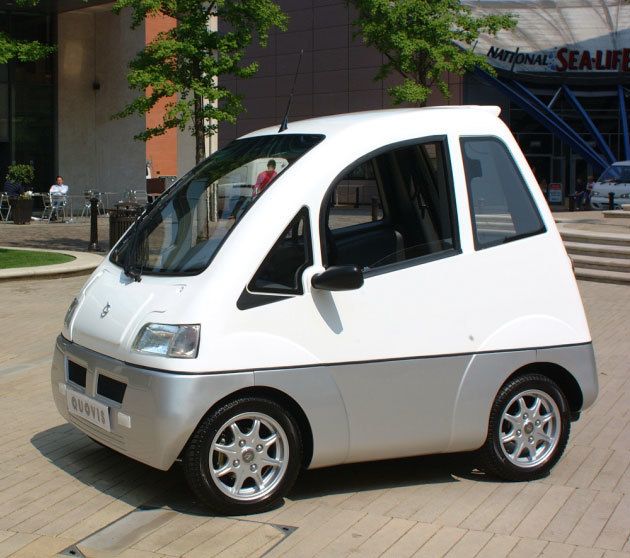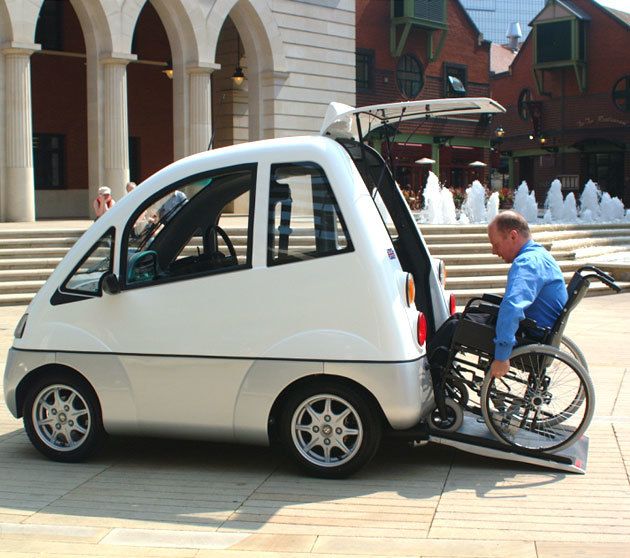We’re all used to seeing vans that allow motorized wheelchair users to roll up on a platform and lift them into the back, but what if a disabled, wheelchair-bound person wants to get behind the wheel themselves?
Normally it’d take an assistant to get them into the driver’s seat, who would then fold up the chair and put it into the trunk or rear seat, and some special controls to use the brakes and throttle.
But some companies have taken the initiative to free up that assistant and allow the driver to roll right up to the steering wheel unassisted. Damn robots…taking our jobs…
While handicap-friendly cars aren’t our usual topic here on Automoblog, I ran across a few Transformers-esque cars that might help out readers with paralyzed family members who are looking past the regular wheelchair-accessible van or MPV.
Let’s have a look:
Segway PUMA
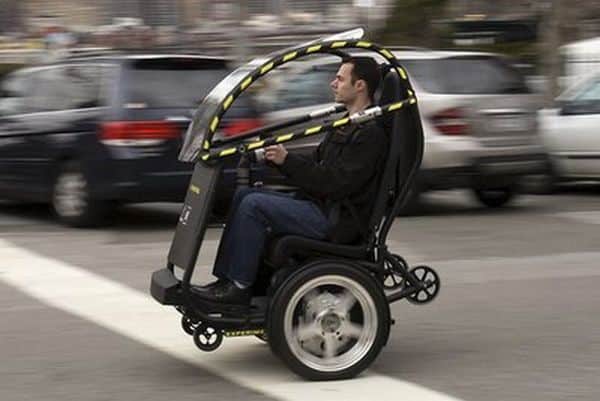
Ok, so technically it’s not a car, but more of a wheelchair itself. Kind of. But look how damn cool it is!
In a collaboration with GM, Segway developed the PUMA (Personal Urban Mobility & Accessibility) as a sort of replacement vehicle for commuters.
And yes, it balances itself like traditional Segways.
The Segway PUMA can travel up to around 30 mph and has a range of about 30 miles between charges.
The PUMA isn’t available yet – it’s just a prototype – so whether or not this’ll ever make it into production is a flip of a coin.
PT Cruiser Conversion
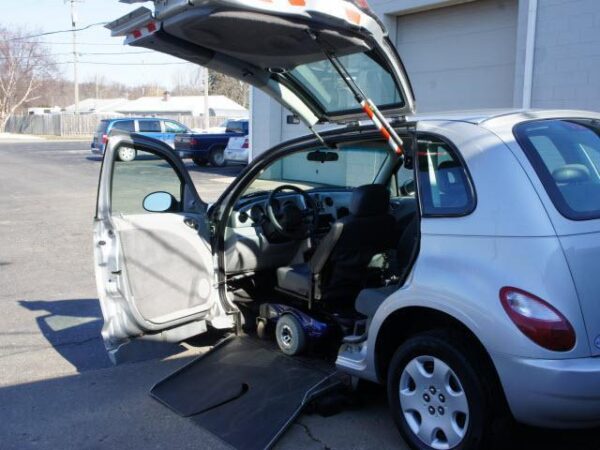
Hey, it looks like there’s a use for the PT Cruiser after all! As many of you know, I absolutely despise this car. But if you’re bound to a wheelchair, it turns out you might find a use for it.
And you even get the chance to convert your doors to gullwing-style without looking like a complete idiot!
I don’t imagine this would be cheap, but by converting the rear door to that gullwing setup, removing the front seat, and adding a fold-out ramp, you’re able to ride right up and get going.
Kenguru
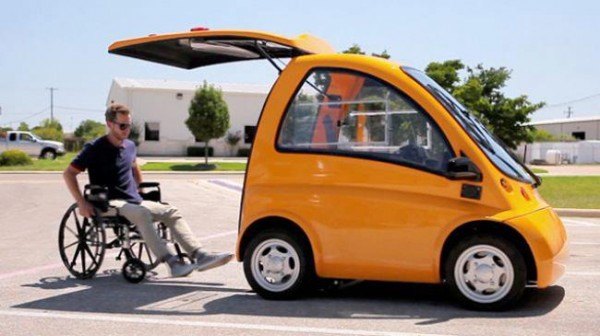
This is taking it to ultimate simplicity, I love it.
A single-person city car, you just back up to a curb, pop open the rear hatch and roll right in. Done.
You roll up to motorcycle-like handlebars with all the controls in front of you (see images below.)
The Kenguru is completely electric-powered, goes 50 miles on a charge, and tops out at about 25 mph. So while it’s not quite highway ready, it’s a good option for scooting around town.
I kind of want one.
Quovis
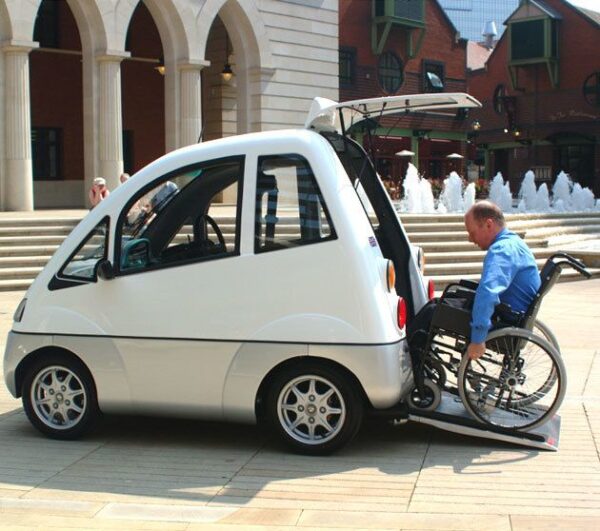
What’s with all the weird names for these things?
The Quovis is very similar to the Kenguru in concept and form. Almost identical, in fact.
The big difference though is that it’s powered by a 505cc motorbike engine and transfers 20.4 horsepower to the front wheels through a CVT. All those tiny numbers adds up to one big one: 90. That’s how many MPGs it gets.
So yeah, it’s basically a scooter underneath.
Another cool feature of the Quovis – it has voice-activated controls for climate, shifting, turn signals, horn, headlamps, wipers, windows, and radio.
What do you think?
Now that paralyzed folk aren’t limited to specialized vans and MPVs which require an assistant, they have much more personal freedom in getting around. Sure, you could pick up a used Mercedes Sprinter or Dodge Caravan and have it converted, which is a popular option, but that’ll likely cost around $20,000 on top of the cost of the vehicle.
And of course the option of buying a pre-converted model is there too, but what’s the fun in that when you could be riding around in a self-balancing wheelchair or 90 mpg city car?

